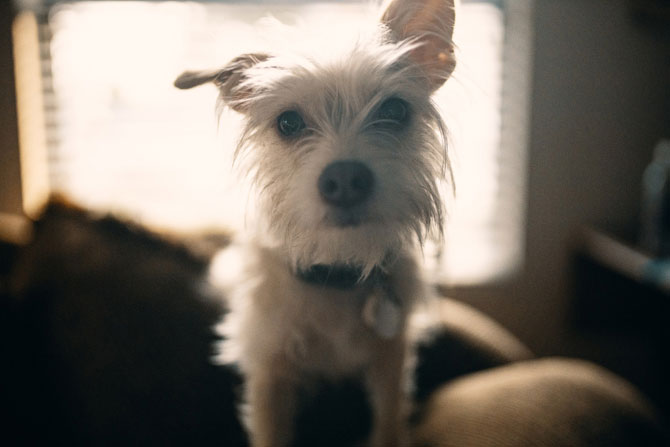While pet sitters and dog walkers may have some say in the fur clients they choose to work with, vets get less of a say. So what happens when you’re faced with an anxious pet? Knowing the signs of an anxious pet and having a few tips up your sleeve to calm your furry friend is essential.
Signs of an anxious pet
Pets typically use body language to communicate their feelings. Sometimes the signs may be subtle, but other times they can be quite easy to spot. Here are a few common signs an anxious pet might display.
Signs of anxiety in dogs include:
- Pacing
- Trembling or shaking
- Frequent lip licking
- Panting
- Lack of appetite
- Restlessness
- Whining
Signs of anxiety in cats include:
- Urinating outside the litter box
- Excessive grooming
- Compulsive licking
- Excessive scratching
- Isolation and aloofness
- Excessive vocalisation
- Decreased appetite
- Increased sleeping
- Aggression towards other animals
- Aggression towards people
Supporting an anxious pet
There are many triggers that can cause anxiety in pets. Common causes may include the weather, such as a thunderstorm, an unfamiliar environment, fear of separation from their owner, and loud or unrecognised noises.
While there are several causes of anxiety in pets, sometimes you might not know why a pet in your care suddenly becomes anxious. As such, it’s important to be caring and supportive. Anxious behaviour should never be punished.
Certainly, for pet sitters and dog walkers there are some steps you can take to help prevent your fur clients from feeling anxious. For example, meet and greets are a no-brainer. Indeed, most pet professionals—and pet parents alike—will insist on a meet and greet as one of the first steps towards a healthy client relationship.
However, there are some owners who would happily allow you to walk or pet sit their pooch or purring pal without even meeting him or her. In this instance, you can explain the importance of an initial meet and greet to avoid issues like anxiety.
Another way to avoid dealing with an anxious pet is to ask the owner to bring along some of the pet’s favourite or familiar items. The more smells they recognise, the more relaxed your fur client will feel and the easier your job will be!
How can vets deal with an anxious pet?
Now, let’s take a look at the steps vets can take to calm an anxious pet. Again, they can ask the owner to bring along the pet’s blanket or play toy but often it’s the scent of the veterinary clinic that can send pets into an anxious spin.
Hello, treats! Treats are a tried and tested method for helping an anxious pet to feel a little better. They might not get rid of the anxiety or nervousness altogether, but they at least taste good! In this instance, liver treats work well, as they can be broken into teeny pieces but they taste super yummy.
Now, depending on how busy you are, exercise might be an option to help calm an anxious pet. I’m not suggesting you take a light jog around the block…no, I’m talking about giving the anxious little cavoodle a brisk walk around the car park!
After all, getting rid of some of that nervous or pent-up energy is a great way to calm any pet and help them feel a little more at ease.
Patience is key
Sure, most pet professionals have bags of patience; it’s paramount to help them do their job well. However, when managing an anxious pet it can be helpful to remember that patience really is essential.
Pets pick up a human body language and tone of voice, so make sure you keep your tone even and calm. Pets probably don’t know why they are feeling anxious, so it can be frightening for them. Be kind and supportive and hopefully the anxiety will be short-lived.
On the other hand, if your fur client starts behaving badly, it’s important not to encourage this behaviour. This can be tricky, as you don’t want to punish your furry friend, but you also don’t want to reward their bad behaviour. In this case, you can try to ignore the negative behaviour and instead rewards them when they are acting calmly again.
How have you managed an anxious pet in your care?
Latest posts by Liz Walden (see all)
- Pet health: Medicinal cannabis for pets - December 27, 2021
- What pet business insurance do I need? - November 17, 2021
- Pet sitters: how to take time off - November 15, 2021










Leave A Comment